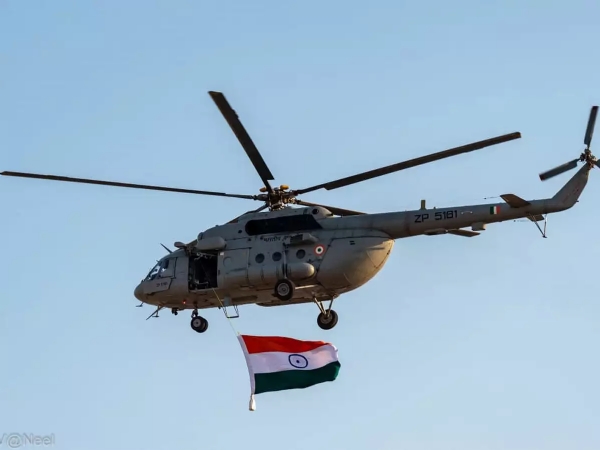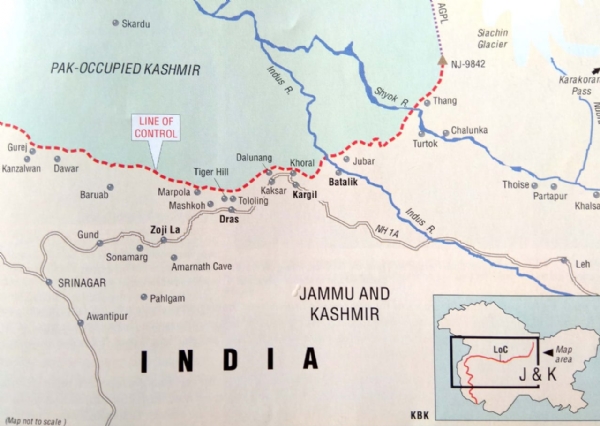Op Safed Sagar: Remembering IAF at Kargil War
The Kargil Vijay Diwas is largely celebrated for the victory of the Indian army, because prominently it was a land based war. But the contribution of the Indian Air Force in the Kargil War is vital.
Total Views |
India's Integrated Battle Groups is a reality today but the Kargil War of 1999 is when the experiment actually took place and the idea of IBGs was further conceptualized. The battle of Tololing, strategically important range for India to recapture during the Kargil war, became a success for India because of the integrated approach of Indian Army and the Indian Air Force.

The Kargil Vijay Diwas is largely celebrated for the victory of the Indian army, because prominently it was a land based war. But the contribution of the Indian Air Force in the Kargil War is vital. Subtracting IAF's involvement from the war would have probably left us with either losing the war or winning the war at the cost of even more martyrs than we already have. At the height of the Himalayas, during the 90's, it was not just a tough task for the Indian army but also for the Indian Air Force to attack the intruders who were hidden at such places on the peaks that their exact location was still not known.
Today, it is still easier to find out the locations of the enemy with the help of drones as they are not easily detectable. In fact today, the targets are even attacked with the help of drones. But when a machine as big as that of a chopper was doing the job, of course, it was an open target for the intruders, which is why we also lost one of the military helicopters. Besides the height of the targeted peaks had challenged the Air Force technologically. However, the Air Force tackled the war skillfully and facilitated the Indian Army to reach the peaks to unfurl the Indian tricolor.
“Aviators have traditionally been a haughty breed. They are used to spending solitary hours with their machines, aloof, on top of the world, far removed from its mundane troubles. Everything that seemed important on terra firma becomes so much smaller. In the cockpit, few things can humble this pride. The mountains can. When you fly at the roof of the world and still have the impassive peaks of the mighty Himalayas look down on you at Flight Level 200, your perspective changes. The experience of air warfare in mountains teaches stern lessons. The aviator must respect the mountains.”
‒An Indian Air Force Mirage 2000 pilot who flew in the Kargil War
The Indian Air Force's Operation Safed Sagar started with the aim to secure Point 5140, in the Tololing range, that was an important peak for India. Considering the height of the peak it was a difficult target for the Indian army, which is why it was decided that the first one to attack the intruders on the peak will the Air Force. However, there was one problem. IAF's combat helicopters, Mi 35 were not capable of flying efficiently at 18,000 ft in the harsh weather of Kargil and Drass.
It was only the Mi 17 aircraft that was capable of flying up to 18,000 ft, however, with restricted use since it is a transport helicopter. The IAF to solve the issue, fixed the Mi 17 helicopter in a way that it would be capable of facing a combat. This was done in the limited time constraint of war. Other than not knowing the exact location of the Pakistani intruders, the height and the weather, another challenge for the Air Force was the arms and ammunition that the intruders had. With the shortly modified Mi 17s, flying up to the peak of Point 5140 to destroy enemies was almost like providing open invitation to death.

Whatever were the dangers, IAF initiated Operation Safed Sagar in the morning of May 26. IAF commenced air ops by attacking enemy positions and supply lines. First strike was launched at 6. 30 hrs by MiG-21, MiG-27ML and MiG-23BN fighters. On May 28, 1999 one of the four Mi-17 which were attacking the enemy at Peak 5140, was lost, after successfully attacking the enemy in the Drass sector. Sqn Ldr R Pundhir, Flt Lt S Muhilan, Sgt R K Sahu and Sgt PVNR Prasad were martyred in the same Mi-17. Despite of losing one helicopter, IAF continued attacking heavily on the peak and facilitated the army to recapture the peak. It was only after IAF had secured the peak, that the Indian army was able to recapture peak 5140 in the morning of Jun 20.
Although the Air Force was officially asked for assistance only after May 20, the IAF had began conducting initial reconnaissance sorties over the Kargil heights as early as 10 May 1999, less than a week after the presence of the enemy incursion was first confirmed by Indian Army patrols and IAF helicopters. The role of the Indian Air Force in the Kargil War is not often talked about. But their contribution in the war was decisive. The IAF martyrs of the Kargil War are hardly remembered by the citizens because no one really knows how the IAF had participated in the war and how had they turned the war in favor of the Indian army. After all, may it be any of the three forces, their final aim is to secure the motherland and to do that if they are functioning in a coordinated manner, as an integrated force then the impact the forces are going to leave will be unparalleled.
This idea was put forth even more effectively after IAF's contribution to the Kargil War. Today, after almost two decades we actually have our IBG battalions ready for combat. Clearly, we have a come a long way since the war and it has proven to be constructive. India has taken the right lessons from the Kargil war.



